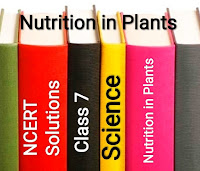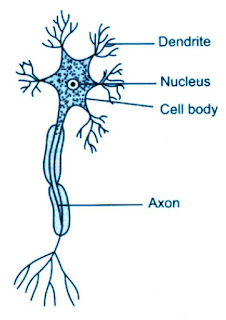NCERT Solutions for Class 7 Science Chapter 1 Nutrition in Plants
NCERT Solutions for Class 7 Science Chapter 1 Nutrition in Plants
-------------------------------------------------------------
Board CBSE
-------------------------------------------------------------
TextBook NCERT
-------------------------------------------------------
CLASS Class 7
--------------------------------------------------------
SUBJECT Science
----------------------------------------------------------
CHAPTER Chapter 1
-------------------------------------------------------------
SUBJECT Nutrition in Plants
--------------------------------------------------------------
You May Also Like NCERT Solutions Class 7
Chapter 12: Reproduction in Plants
Chapter 13: Motion and Time
Electric Current and Its Effects
Chapter 15: Light
Must Visit: 1. MCQ Class 7 Science.
3. NCERT Solutions Class 7 Maths
Question 1:
Why do organisms need to take food?
Answer 1:
All organisms need to take food because food gives energy to perform various activities and also provide essential elements that are necessary for the growth, development and
maintenance of their bodies.
The main functions of food are:
(i) food provides energy to perform various activities.
(ii) food helps in growth
(iii) food helps in replacing and repairing the worn out body parts.
(iv) Food gives us protection against diseases.
Question 2:
Distinguish between a parasite and a saprotroph.
Answer 2:
Difference between a parasite and a saprotroph:
Question 3:
How would you test the presence of starch in leaves?
Answer 3:
The presence of starch in leaves can be tested by ‘Iodine Test’. Iodine turns starch solution into blue-black colour.
Question 4:
Give a brief description of the process of synthesis of food in green plants.
Answer 4:
The food is synthesized by green plants by the process called photosynthesis. This process generally occurred in leaves. Where plants in presence of chlorophyll, water, carbon dioxide and sunlight make food (glucose).
(chlorophyll)
Water + Carbon dioxide →→→→Food + Oxygen
(sunlight)
Question 5:
Show with the help of a sketch that the plants are the ultimate source of food.
Answer 5:
Question 6:
Fill in the blanks:
(a) Green plants are called _________________ since they synthesise their own food.
(b) The food synthesised by the plants is stored as _________________.
(c) In photosynthesis solar energy is captured by the pigment called ___________.
(d) During photosynthesis plants take in ______________________ and release __________________.
Answer 6:
(a) Green plants are called autotrophs since they synthesise their own food.
(b) The food synthesised by the plants is stored as starch.
(c) In photosynthesis solar energy is captured by the pigment called Chlorophyll.
(d) During photosynthesis plants take in carbon dioxide and release oxygen.
Question 7:
Name the following:
(i) A parasitic plant with yellow, slender and tubular stem.
(ii) A plant that has both autotrophic and heterotrophic mode of nutrition.
(iii) The pores through which leaves exchange gases.
Answer 7:
(i) A parasitic plant with yellow, slender and tubular stem – Cuscuta
(ii) A plant that has both autotrophic and heterotrophic mode of nutrition - Insectivorous plants.
(iii) The pores through which leaves exchange gases - Stomata.
Question 8:
Tick the correct answer:
(a) Amarbel is an example of:
(i) autotroph
(ii) parasite
(iii) saprotroph
(iv) host
(b) The plant which traps and feeds on insects is:
(i) Cuscuta
(ii) china rose
(iv) pitcher plant
(iv) rose
Answer 8:
(a) Amarbel is an example of (ii) parasite.
(b) The plant which traps and feeds on insects is (iv) pitcher plant.
Question 9:
Match the items given in Column I with those in Column II:
Answer 9:
Question 10:
Mark ‘T’ if the statement is true and ‘F’ if it is false:
(i) Carbon dioxide is released during photosynthesis. (T/F)
(ii) Plants which synthesise their food themselves are called saprotrophs. (T/F)
(iii) The product of photosynthesis is not a protein. (T/F)
(iv) Solar energy is converted into chemical energy during photosynthesis. (T/F)
Answer 10:
(i) Carbon dioxide is released during photosynthesis. (False)
Correction: Carbon dioxide is absorbed during photosynthesis.
(ii) Plants which synthesise their food themselves are called saprotrophs. (False)
Correction: Plants which synthesise their food themselves are called autotrophs.
(iii) The product of photosynthesis is not a protein. (True)
(iv) Solar energy is converted into chemical energy during photosynthesis. (True)
Question 11:
Choose the correct option from the following:
Which part of the plant takes in carbon dioxide from the air for photosynthesis?
(i) Root hair
(ii) Stomata
(iii) Leaf veins
(iv) Sepals
Answer 11:
(ii) Stomata
Question 12:
Choose the correct option from the following:
Plants take carbon dioxide from the atmosphere mainly through their:
(i) roots
(ii) stem
(iii) flowers
(iv) leaves
Answer 12:
(iv) leaves
Question 13.
Why do farmers grow many fruits and vegetable crops inside large green houses? What are the advantages to the farmers?
Answer 13:
Many farmers grow fruits and vegetables inside large green houses because it protects buds, flowers and fruits from wind, rodents, birds etc. The greenhouses have several advantages, it provides optimum sunlight, temperature and water to the crop for healthy and good quality of fruits and vegetables. It also protects from the harsh climatic condition. Due to it, farmers get maximum output.
Important topics covered in NCERT Solution for Class 7 Science Chapter 1– Nutrition in Plants
Mode of Nutrition in Plants
Photosynthesis – food making process in plants
The alternative mode of nutrition in Plants
Saprophytes
Nutrient replenishment in the soil
NCERT Class 7 Science Chapter 1 is a Colorful chapter because it helps you to understand the world of plants around you. There are various projects in the curriculum that students will enjoy the learning process. The syllabus introduces you to new terms and concepts, which will guide you to study this chapter.
In the Class 7 Nutrition in Plants chapter, students will learn many new concepts which are related to plants and how they acquired nutrition for themselves, they will also learn about the photosynthesis process of food preparation in plants, learn the function of chlorophyll, stomata. Also know about insectivorous plants.This chapter will teach you about the basics of plant nutrition, how plants make their food, but this chapter will help students who read carefully understand the concepts of higher quality botany.
In addition, students will also learn how nutrients are replenished in the soil, as we all know that the amount of nitrogen in the air is very high, but plants cannot take nitrogen through the air and they need nitrogen in salts form like nitrates and nitrites. The Rhizobium bacteria can take up atmospheric nitrogen directly and convert it into usable nitrogenous compounds which can be absorbed by plants.
Students are advised to solve the previous year's questions as well as the sample papers. Solving the sample papers and previous year's papers will help to know the test pattern as well as get the concept,how to write an answer to the point according to the marks of the question.
Read them carefully:
1. Notes on Plants Nutrition
2. Sample Papers on plants nutrition
Frequently Asked Questions on NCERT Solutions for Class 7 Science Chapter 1
What are the important topics covered in the Chapter 1 of NCERT Solutions for Class 7 Science?
The important topics covered in the Chapter 1 of NCERT Solutions for Class 7 Science are –
1. Mode of Nutrition in Plants
2. Photosynthesis – food making process in plants
3. The alternative mode of nutrition in Plants
4. Saprophytes
5. Nutrient replenishment in the soil



